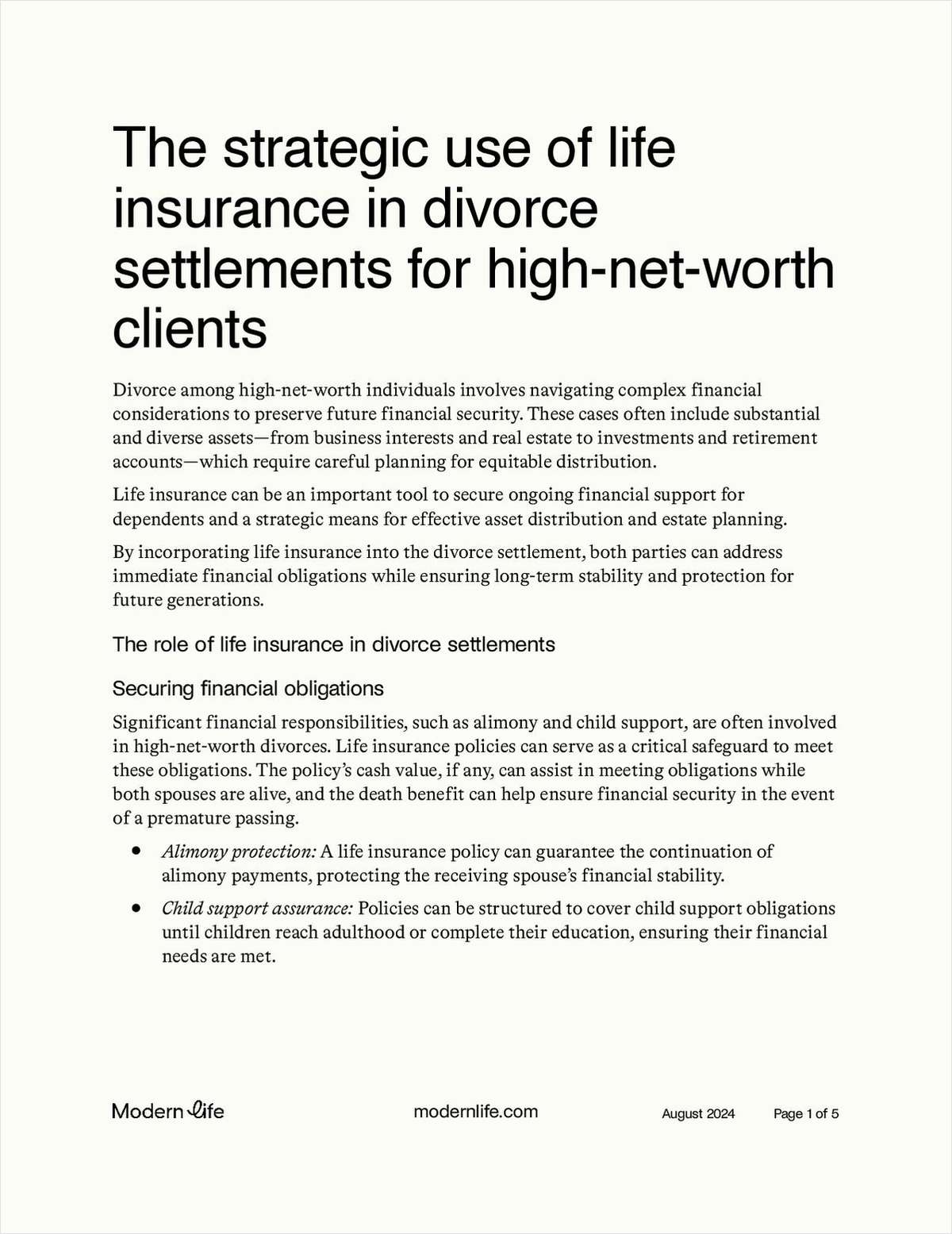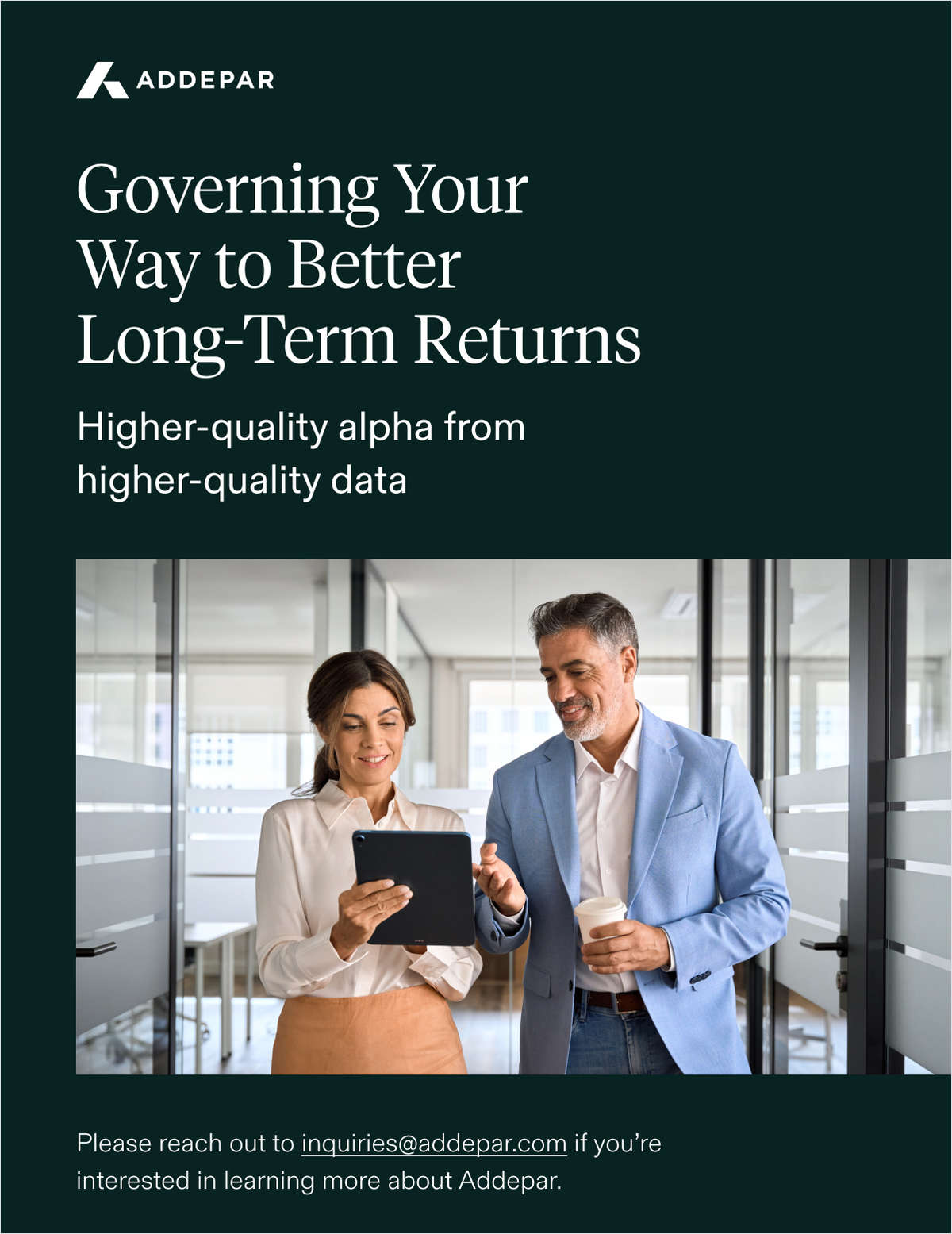This month, Peggy Cabaniss turns over the reins as the chairman of the National Association of Personal Financial Advisors (NAPFA) to Dick Bellmer. But before, during, and after her tenure at the helm of the fee-only planners group, Cabaniss has run her firm, HC Financial Advisors Inc. in Lafayette, California, in a way unique enough to qualify her as an IA Leader. "This is not a factory," Cabaniss says in reference to her firm. Small enough to offer personalized attention but savvy enough to provide individual stock- and bond-picking advice to its clients, Cabaniss's firm is solidly successful. Her leadership position at NAPFA has also allowed Cabaniss to survey the state of the profession, to clearly see its warts and its beauty marks. She spoke to editor Jamie Green in early July.
On how you got started in the business.
I have been doing this for a long time, but it's been spread out and intermixed with doing many other things that point to some of issues [I'm interested in]. In NAPFA I'm finishing up as chair, but I'm going on to a new topic–what we call NAPFA Women, or NAPFA Supporting Women. I have three children who this summer will be 29, 33, and 35. When my little boy was two years old, I answered this ad and started working with this man who was a CPA. For half his clients he managed their portfolios and did a once a year review to make sure that everything was in place as far as their taxes and estate plans. This was the early 1980s, and the concept of fee-only financial planning didn't exist. A couple of years after I started working for this man I saw an article in a paper about a guy in Moraga [California, near HC Financial in northern California] who was a member of this group called NAPFA. That started my interest. But frankly, I had been doing what NAPFA was talking about for a couple of years. So it all started slowly, working a grand total of 10 hours a week.
I thought that that whole picture–the comprehensive picture of a family with its finances–was fascinating. So I went back and got my CFP, and the kids grew up, and that was my balancing act for many years–raising kids, and good kids, which takes time, and sort of keeping my career on hold. When you're doing that sort of thing, you have to put your own desires on hold–you can't just build a business.
A lot of women try to balance family and career, and what they don't realize is how long they're going to live. They don't realize how many years they can go full blast.
On what you provide to clients.
We have two CFAs on our staff. We try to offer individualized service for the client, and we build portfolios primarily with individual stocks and bonds if the portfolio is big enough, but we also build portfolios with no-load mutual funds. This is an office for people who want personalized attention, who have family issues, multigenerational issues. We have a lot of clients who want somebody to talk to about what's going on inside their families. This is a particular interest of mine–the psychological aspect of money and family. We try to make our clients' financial lives smooth.
When a client comes in, I'm the first person they meet, I do all the financial planning, and work up the investment strategy for the client. One of the CFAs is brought in as the portfolio manager to get to know the client and manage their portfolio. We have a team approach.
On the size of HC Financial.
We have six employees and about 160 clients and $160 million under management. About 90% of the work we do is on an annual fee basis, which includes management of the plan's assets, doing comprehensive financial planning, making sure everything is in order in their financial life. I still do 5% or 10% of my work hourly. That's a difficult issue not only here at HC Financial but also within our industry. We have this constant problem of financial advisors being able to help the middle market–someone who doesn't need ongoing management. Very few people provide this service any more. We try to keep doing it but it's hard–it's not a money maker at all; it's very labor intensive. Every time I do a financial plan for someone it feels like a college research paper–it's exhausting.
On where you get your clients.
It's not too different from what other people do. There are two primary sources of clients–a couple of other professionals, estate planning attorneys and CPAs, who we've worked with for a number of years very closely. I've shown them samples of financial plans that I've done for one of their clients, or the portfolios, so they see examples of the type of work we do and how we work on a constant basis with the client. They've been a good source of referrals. We're also looking for trusted partners, but when I say that, I don't mean exclusive–there are three to five estate planning attorneys that I trust, that I know what kind of work they do and they know what kind of work we do. So I always give clients two or three references when they ask for an estate planning attorney. They're looking for the same thing in return.



